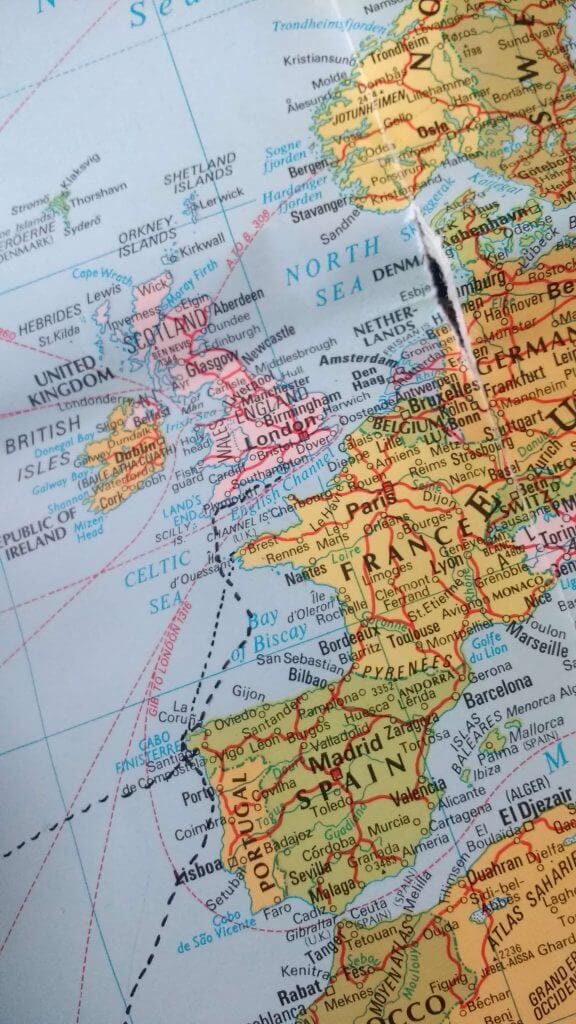Boat Hitchhiking Part 1: Why Hitchhike Across the Atlantic
Welcome to the How to Be a Boat Hitchhiker Series!
This series will go through everything you need to know if you want to head out to one of the marinas famed for their boat hitchhiking opportunities. Whether you want to hitch across the Atlantic or simply thumb a ride from England to Spain, this series will tell you the need-to-know information.
At the end of the series, you’ll be able to download the eBook for free, which contains everything in the series.
Why Hitchhike on a Yacht?
If you’re from Northern Europe — you know how cold the Atlantic is in winter. It’s rough, it’s windy and it’s freezing. No one wants to get in that.
Why on Earth would you want to cross it, right?!
When I was in Madeira, I met a sailor who grimaced when I said I was heading to the Canary Islands before crossing the Atlantic in December.
‘Ooo rather you than me,’ he said, ‘it’ll be freezing in December!’ I stared at him, confused. How could he, a sailor who had sailed at least from Spain to Madeira, not know about the temperature of the Mid-Atlantic?
This sort of ignorance in some sailors is something I’ll address later in this series — for now though, I’ll tell you a secret.
Before I started sailing, I thought the Atlantic was generally freezing. Everywhere. Indiscriminately. I knew so little about sea temperatures that when I backpacked across the USA in 2009 and reached the Pacific in California, I thought it would be warm.
Needless to say, it wasn’t.
So if you thought that the whole Atlantic was cold — that’s cool, me too. When you start to sail though, the wind and the sea become your priority and you’ll learn how they work.
The North Atlantic is cold and because the sea temperature affects the air temperature offshore, the wind is really cold too. When you cross the Atlantic from the Canary Islands or the Cape Verdes however, it’s a whole different kettle of fish.
Mid-Atlantic Temperatures
In winter, the water temperature in the Canaries is generally between 22 and 25 degrees Celsius. Not bad eh? It’s even warmer in the tropical Cape Verdes. The water temperature then increases the further west you go towards the Caribbean until it gets to a balmy 29 degrees. Suddenly crossing the Atlantic doesn’t seem so chilly.
Once you get down to the tradewind latitudes at around 20 degrees latitude — the wind and the sea are warm and during the day you’ll find yourself wanting shade from the sun, not any extra heat.
So that’s the temperature sorted — but still, what’s so great about crossing the Atlantic? Well, the same thing that brought you to this series — Adventure.
An Ocean of Adventure
Just because hundreds of people cross the Atlantic every year, doesn’t mean it’s no longer a true adventure. No matter if you set off solo or set off in the middle of a 300-boat rally, you are always essentially alone in this 3000-mile stretch of ocean.
There’s really nothing out there.
The tradewinds are usually stable when you cross but they can still be affected by sneaky pressure systems from the north and south and there are always squalls to deal with at some point. This means that it’s a challenge and every day and night the boat will need care, attention and sail changes.
Spending what is usually a month in open ocean is enough to give anyone the shivers. Shivers of fear and excitement.
Yes, there are times when night is approaching and you can feel the wind and your nerves picking up. There are times when the sheer scale of the ocean and your tiny boat in it seem incomprehensible.
There are 3am night watches when you wonder why you’re not fast asleep in your house, knowing that if a gale comes, you just close your bedroom window.
Crossing the Atlantic is still a major achievement of body and mind and you won’t walk away unchanged.
Of course, not only is it the journey — but also the destination (no matter what the traditional quotes may say). Most sailors make landfall in South America or the Caribbean, both beautiful and exotic places.
If you’re an EU national, you shouldn’t need a visa for most Caribbean islands and the backpacking in South America is endless. A lot of boat-hikers aim to travel South or Central America after their trans-Atlantic crossing.
If you’ve only got a teeny amount of time, one-way flights from your landfall to Europe are pretty cheap.
Why cross?
Warm winter weather
True adventure
Exotic destination
